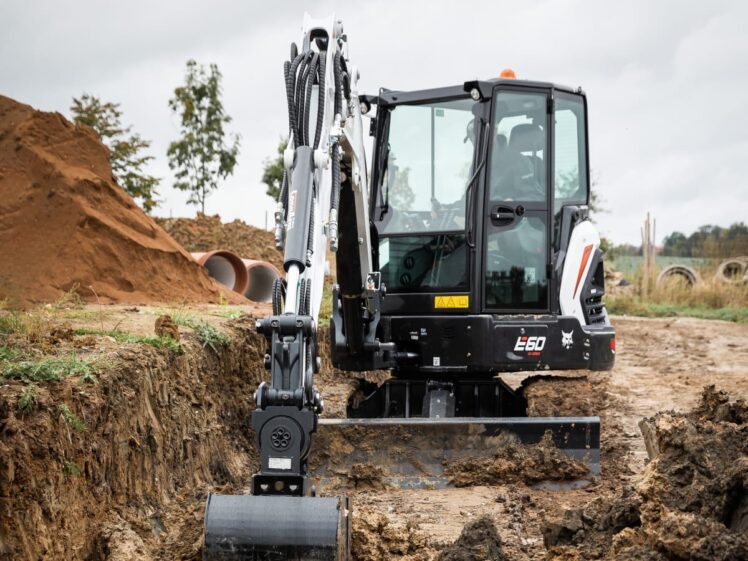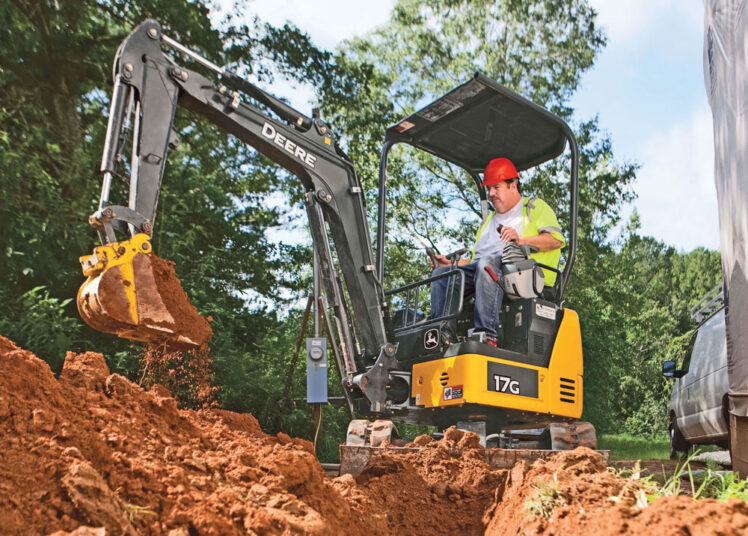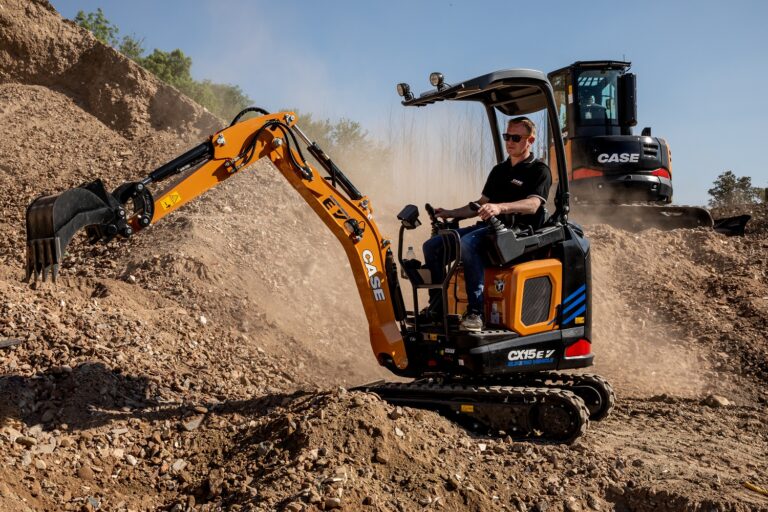Table of Contents
The mini digger is a well-liked addition to any fleet of construction equipment because of the machine’s adaptability and simplicity of use. Below you’ll find some general information regarding mini diggers, as well as some advice on how to use one as effectively and securely as possible.
What is a Mini Digger?
A mini digger, sometimes known as a mini-excavator, is comparable to a conventional excavator, with the sole exception that it is figuratively just a little bit smaller. They weigh up to 20,000 pounds and can be wheeled or tracked. Excavators that weigh more than this are frequently referred to as “standard excavators” and are treated as such.
A mini digger can be equipped with either digging attachments or demolition attachments, the two most common variants. Depending on the project you’re working on, you might need to use various attachment types.
To operate, maneuver, and control the machine, the driver of a mini excavator sits in a cab. The operator of the equipment must have training before using one of these, which has cabs that can spin 360 degrees. All the controls for operating the digger’s arm and attachment are located in the cab.
Tips To Use A Mini Digger For A Backyard Project
1. Should Not Be Operated By Amateurs

Mini excavators should only be operated by those who have undergone the necessary training and are familiar with how to handle them. Compared to other construction equipment, this piece of machinery is very modest, yet it still has a lot of power and can be deadly if not utilized properly.
Before you start using a digger, you must have a thorough understanding of all its parts. In actuality, this is accurate for all forms of construction machinery. You should be familiar with the machine’s hydraulic fluid levels, its safety features, and all controls that are necessary for their proper operation. When you are familiar with the parts of the machinery, you can spot problems with it more easily.
2. Read The Instructions
Since they contain particular instructions and safety warnings from the manufacturer, it is always vital to read the instructions that came with the excavator you purchased or hired. Even though these specific instructions are crucial, there are some overarching principles to bear when operating a mini excavator.
3. Test The Machine
Before using the digger for your project, it is a good idea to test the equipment and controls in a sizable, open space with a smooth and level surface. This will give you a feel for the machine and ensure that you comprehend the controls before you begin your endeavor.
4. Plan Ahead

It’s a good idea to outline your strategy to work before getting on the machine and strategizing. Before starting work, many operators don’t thoroughly plan out their strategy, which can waste time and fuel. Determining where to place your spoil pile is one of the phases you might want to consider. This will make it more likely that the project won’t unintentionally confuse you.
This must be repeated because it is so crucial. Planning will help you work more efficiently. This entails imagining how your task will develop and may even involve making a map guide out of stakes, twine, or chalk lines. Consider techniques to minimize machine movement as you develop your plan of attack. You’ll save time, use the machine for fewer hours, put minor wear on it, and it might even help you save money on fuel.
5. Hire A Mini Digger
You could find that hiring a mini excavator is the best choice for your job. Only use a little digger on smaller jobs if you have a pressing need for speed. You may finish your project in half the time and with fewer issues if you use a tiny digger, which will also save you money.
Despite the fact that the majority of us have a shovel or a spade, we can’t afford to buy a mini digger entirely. You can choose from short-term rentals up to longer-term rentals of mini diggers, thanks to the easy availability of these machines from local businesses you can find here.
6. Be Sure The Ground Is Level
Although not all building sites are built on level ground, utilizing the mini digger on a flat surface is safer. They are doubtful to topple over while operating a tiny digger because of the weight of the equipment. However, it is essential to verify that the machine is stable.
Operators must ensure the excavator is not placed too close to the edge when excavating a trench. Soft soil may collapse and cave in, posing a possible risk to one’s health and safety.
7. Search For Any Obstacles

You might encounter barriers on a building site in addition to workers and equipment. On the edge of a construction site, there may be overhanging tree branches that could harm the digger. Additionally, operators might have to contend with potholes or sharp inclinations in the terrain. Use mirrors and cameras that are built inside mini diggers wherever you can.
8. Maintain The Machine Regularly
If you are feeling rich and decide to buy a mini excavator, maintenance is something you should pay attention to. Understanding when a problem arises with your excavator’s parts is insufficient. Like any other big machine, your excavator needs regular maintenance to stay in good working order. Maintain a regular maintenance schedule to prevent downtime, which could ultimately cost you a sizable amount of cash. Pay close attention to minute details and follow the manufacturer’s recommended maintenance regimen. Consider keeping a maintenance diary so you can track when and who last serviced your excavator to ensure it is getting routine maintenance.
Conclusion
If you can drive a car, using a mini excavator shouldn’t be too difficult. But it’s trickier than just getting in the driver’s seat and adjusting the pedals and gears. You can complete the task with ease if you take a little extra care and know a little bit about the beast you’re in!

